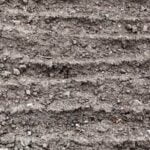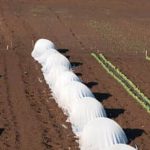Introduction
Small garden design is becoming increasingly popular for many reasons. These gardens, also commonly referred to as micro gardens, can offer enormous benefits, especially for those living in urban areas where traditional gardening may not be possible. Many people find the idea of having a place in their own backyard to cultivate fruits and vegetables extremely appealing. The challenge of creating an aesthetically pleasing outdoor space in a limited area presents unique opportunities for experimentation with creative methods such as vertical gardening and water harvesting. In this article, we discuss the potential advantages and challenges of small garden design and explore the exciting possibilities of creating these special areas within the home landscape.
The main benefit of having a small garden is that it allows us to grow our own food organically in an efficient manner. With advances in technology, such as improved irrigation systems and vertical gardening techniques, it’s now easier than ever to produce a variety of crops on a relatively small amount of land. This can make growing food significantly more affordable and reduce reliance on shop-bought produce that may have been treated with pesticides or other chemicals. Additionally, having a small garden can be incredibly satisfying – by tending to the plants you are able to reap rewards that are truly your own.
One big challenge associated with small garden design is finding ways to utilize limited space without sacrificing aesthetics or functionality. Along with clever planting strategies there are several other resources available to help create efficient use of small spaces: Containers placed on balconies or patios can become miniature flower beds full of color; trellises can provide support for vertically grown vegetables; and drip irrigation systems helpwater plants efficiently while cutting water usage costs dramatically. All these components must work together if a successful outcome is desired – so planning ahead will be key!
In conclusion, having a well-designed small garden offers many advantages, allowing urban dwellers limited outdoor space to enjoy the rewarding experienceof harvesting home-grown organic fruits and vegetables – without any compromise on style or efficiency!
Creative Ideas for Small Garden Designs
To design a small vegetable garden, one of the first things to consider is how to maximize the space. Raised beds are an excellent way of creating more planting opportunities in tight spaces. Place them against a fence or wall and add creative touches such as trellises and obelisks that can be used for vertical planting; this allows you to grow more plants with less support materials. Additionally, create a bold statement by introducing different textures into the garden – alternate rows of plants including leaves, blooms and fruits to give depth to the garden.
Building hanging gardens can dramatically impact a small garden area; consider placing potted plants or hanging baskets from sturdy hooks planted into walls or fences for extra territorial planting options. You can create imaginative designs from hanging containers filled with soil – trailing vines will add interest and greenery to blank areas around your garden. Finally, take advantage of herbs – their slim bodies and structure enable them flourish in smalller, less supported settings and can provide mellow bursts of color through both their foliage and flowers.
Small Garden Design Ideas
When creating a small garden design, the most important thing to keep in mind is that space is limited. It’s important to choose plants, tools, and techniques that will all help maximize both space and yield. Here are some tips and techniques you can use to make the most of your small garden space:
1. Choose Plants Carefully: Pick plant varieties suitable for small spaces and select ones that have been bred with higher yields in mind. Look out for bush-style or patio varieties of vegetables like tomatoes, peppers, beans, or eggplant that produce higher yields while taking up less space than their larger counterparts.
2. Incorporate Raised Beds and Containers: Using raised beds or containers is another great way to maximize your small garden space. Raised beds work great for vegetables like peppers, yellow squash, onions, cucumbers, and even some root vegetables like carrots and potatoes since you don’t have to worry about losing soil depth as you would with traditional row planting. Containers can come in handy when trying to squeeze in extra herbs or other plants without taking up too much precious real estate in your garden.
3. Utilize Vertical Growing Options: Making use of vertical growing options like trellises or wall containers can help you save on valuable ground space while also giving vines and vining veggies (like squashes) an opportunity to grow up instead of out.
4. Install Mulch Layers: Installing a layer of organic mulch around plants will also help conserve moisture while suppressing weed growth so you won’t need to aggressively mow as often or deal with weeds as frequently as you otherwise would with a traditional yard full of grassy ground coverings.
With careful planning and these design tips & tricks at hand, whichever Garden Design Pictures Vegetable idea you choose can become a reality no matter how big (or tiny) your outdoor plot may be!
Maximizing Space in Small Yards
Small yards can be difficult to work with, but creativity is key when it comes to making the most out of a small garden. An important factor in maximizing space is taking into account the climate and local growing conditions—knowing which vegetables, fruits, plants, or flowers will thrive will ensure that you get the best bang for your buck. When designing a small garden, vertical planting options like trellises and wall planters are great ways to create more growing space while working with limited space. Intercropping plants—placing different crops close together so they co-exist—can also save on space while still allowing multiple types of produce to grow in one area. Groundcover plants are another viable solution; not only do they crowd out weeds, some varieties actually help increase soil fertility. Cleverly placed accent items such as garden boxes, raised beds, or even self-watering mini greenhouses are recommended if additional square footage is desired for various plants. With creativity and ingenuity anyone can figure out how to make the most of their small outdoor area regardless of size!
Design Tips for a Healthy Vegetable Garden in a Small Space
Controlling Weeds: In a small garden, weeds can quickly grow out of control if not managed properly. One way to avoid this is by mulching around the plants at least three inches deep—this keeps sunlight from reaching the weeds and stops them from growing. As needed, make sure to pull any weed that grows in order to keep your garden healthy.
Water Conservation: To conserve water within a small vegetable garden, an irrigation system should be put in place. This doesn’t need to be complicated; just set up some soaker hoses throughout the garden or use a simple drip irrigation system. This also helps cut down on water wastage in your garden as it delivers exactly what is needed right where it is needed.
Small Harvests: Many vegetables such as beans, radishes and greens are better choices than larger vegetables such as squash or melons for a small-space vegetable garden since they don’t require much space to grow but will still yield ample harvests. If you are growing larger vegetables, choose varieties that are suitable for smaller spaces such as bush versions of traditional vining varieties; these typically take up less space and have higher yields per square foot than their full sized counterparts. Additionally, succession planting (staggering plantings throughout the season) can help ensure a steady supply of produce all season long by avoiding overcrowded gardens that do not yield optimal harvests because of lack of space and resources for all the plants to reach maturity simultaneously.
Pictures of Beautiful Small Vegetable Garden Designs
A small vegetable garden can bring a lot of joy and satisfaction to any gardener. Whether you have a tiny courtyard, a balcony or a large plot for your garden, it’s important to make sure you get the most out of the space available. When it comes to small vegetable garden design pictures, there are some common tips and tricks that will help create productive gardens in more confined areas. Start by planting vertically – this will save room and ensure larger plants don’t shade smaller ones. Utilize companion planting – grow tall crops such as pole beans with something low-growing like carrots or beets. Plant in raised beds or planters – this helps conserve soil moisture and can make maintenance easy. Also consider spiralizing herbs and trailing flowers around plants to help attract beneficial insects. Finally, being creative and having fun is encouraged: DIY trellises, harvest baskets and upcycling materials are just some of the ways to make your small vegetable garden truly one-of-a-kind! You also want to minimize weeds; mulching is one way you can do that. Planning out what will go where in your veggie patch ahead of time is recommended; many great small vegetable garden design pictures feature layouts including all that aforementioned information! By researching different planting methods and landscaping tactics, you can create a unique and effective space for growing your own food!
Managing a Small Vegetable Garden
Small vegetable gardens are incredibly rewarding, but they also come with their challenges. When dealing with very limited space, it can be difficult to achieve success in growing a variety of vegetables. Here are some common challenges that home gardeners face when growing a vegetable garden in a small space along with some strategies and solutions.
One of the biggest challenges that small gardens face is lack of sun exposure. Most vegetables require at least six hours a day of sunlight for maximum health and growth. Unfortunately, many urban backyards don’t get enough sun throughout the day due to surrounding buildings or trees blocking direct light. Fortunately, this can be overcome by utilizing container gardening or growing vegetables in raised beds and trellises that provide more direct access to the sky.
Another challenge encountered by many vegetable gardeners is ensuring enough soil fertility for their plants. Decreased soil fertility often results from over-tilling or inadequate composting, which can make it difficult for plants to access essential nutrients. The best way to combat this is through encouraging soil biodiversity by planting companion crops, adding natural fertilizer such as composted materials, and using cover crops to add essential organic matter into the soil.
Finally, another common issue faced when managing a small vegetable garden is pest infestations and diseases; both of which can damage or even kill plants if left untreated. To minimize outbreaks of pests and diseases in your garden it’s important to practice regular crop rotation (to reduce the chances of re-infection) use disease resistant varieties where possible, learn how to identify common pests, and encourage beneficial insects into the area with flowers and other traps such as sticky cards and yellow panels.
With careful planning and implementation, it’s possible to create a thriving small vegetable garden despite these common challenges!
Common Vegetables for Small Spaces
When it comes to small garden design, vegetables can be a great accompaniment for a beautiful and productive outdoor space. When selecting a variety of vegetables for a small garden design, there are some important considerations to be taken into account.
Firstly, consider the type of soils that you have in your space: different vegetables will require different soil types and this will affect the types of vegetables that can be grown. If your soil is acidic or overly compacted, certain acidic loving (tolerant) plants may do best. It’s worth taking the time to test your soil’s pH level beforehand and make sure you select appropriate varieties carefully.
It is also important to consider what kinds of vegetables you want in your small garden. Consider whether you want plants with shallow roots to allow more depth for other plants, or if you would prefer something more hearty like tomatoes which need deeper soil levels. Different species perform better in diverse climates so always check the labels when purchasing seeds so make sure they are suited to your local climate.
Finally, research the varietals themselves. Certain varieties grow better in dry or wet conditions; others may give you less yield but taste better; and some may need staking or cages for support during growth stages. All these features should be considered before making any purchases.
Diversifying Small Gardens
Combining flowers, vegetables, and herbs in a small garden is an effective way of creating an attractive and productive space, full of both visual interest and delectable produce. By planting a mixture of fruits and vegetables, you can maximize the limited space available while also providing a visually stimulating environment that appeals to people, pollinators, and wildlife alike.
If you’d like to add some additional dimension or complexity to your small garden design, try mixing up plants with different sizes and colors. This will create different levels of heights or lines to define each bed. You could also use companion planting techniques where certain vegetables plants are grown among other types of flowers or herbs benefit each other growth-wise. For example marigolds tend to help keep pests off tomatoes so they often get planted together. Additionally, mapping out nearby colors with a plant palette can be invaluable when it comes to creating contrast in the garden.
Whenever possible incorporate edible landscaping into your small garden design by electing for plants that have multiple uses such as annual veggies that offer visual interest along with tasty harvests; some great examples include Swiss chard or kale that grow wonderfully in both ornamental beds as well as vegetable gardens. Also consider having groundcovers such as strawberries instead of grass which can use up unnecessary space while still providing food benefits.
Whether you opt for traditional rows or prefer companion planting techniques and vertical gardening techniques; combining flowers vegetable plants is sure to give your small garden design pictures vegetable plots fabulous flavor and appeal!
Conclusion
Creating a successful small garden design can be overwhelming, especially when faced with limited space. However, using practical solutions such as stacking plants and maximizing vertical space through trellising, arbors or pergolas can help you create a beautiful and productive vegetable garden with minimal effort. Additionally, incorporating companion plantings to assist in natural pest control, interspecific competitive exclusion of poor-performing varieties, and utilizing color–blocked pathways to direct attention towards the most prolific areas are all excellent ways to maximize the efficiency and beauty of your small vegetable garden. With some thought and planning, you can create a stunning edible landscape with little space.

If you’re looking to get into vegetable gardening, or are just looking for some tips on how to make your current garden better, then you’ve come to the right place! My name is Ethel and I have been gardening for years. In this blog, I’m going to share with you some of my best tips on how to create a successful vegetable garden.





